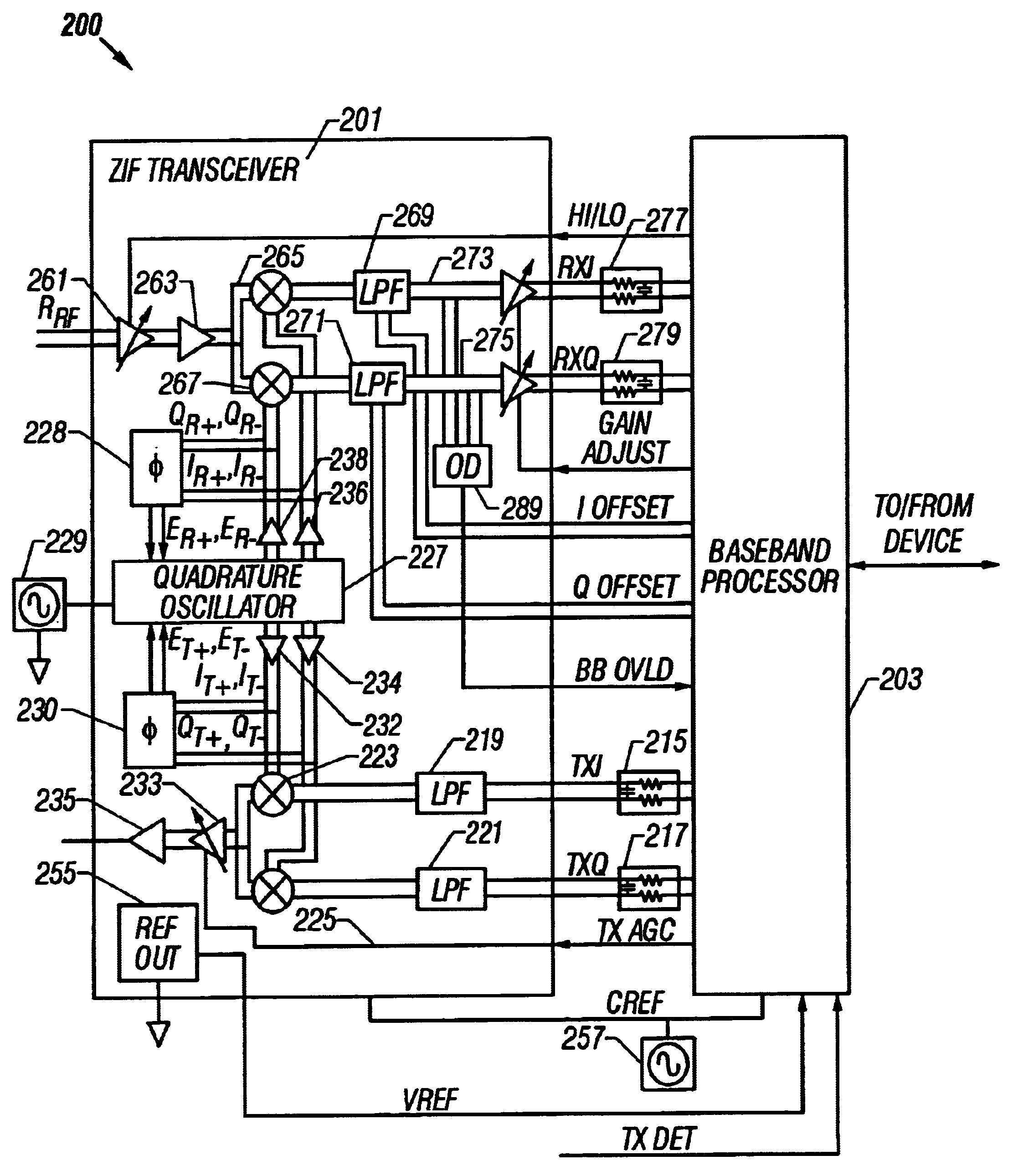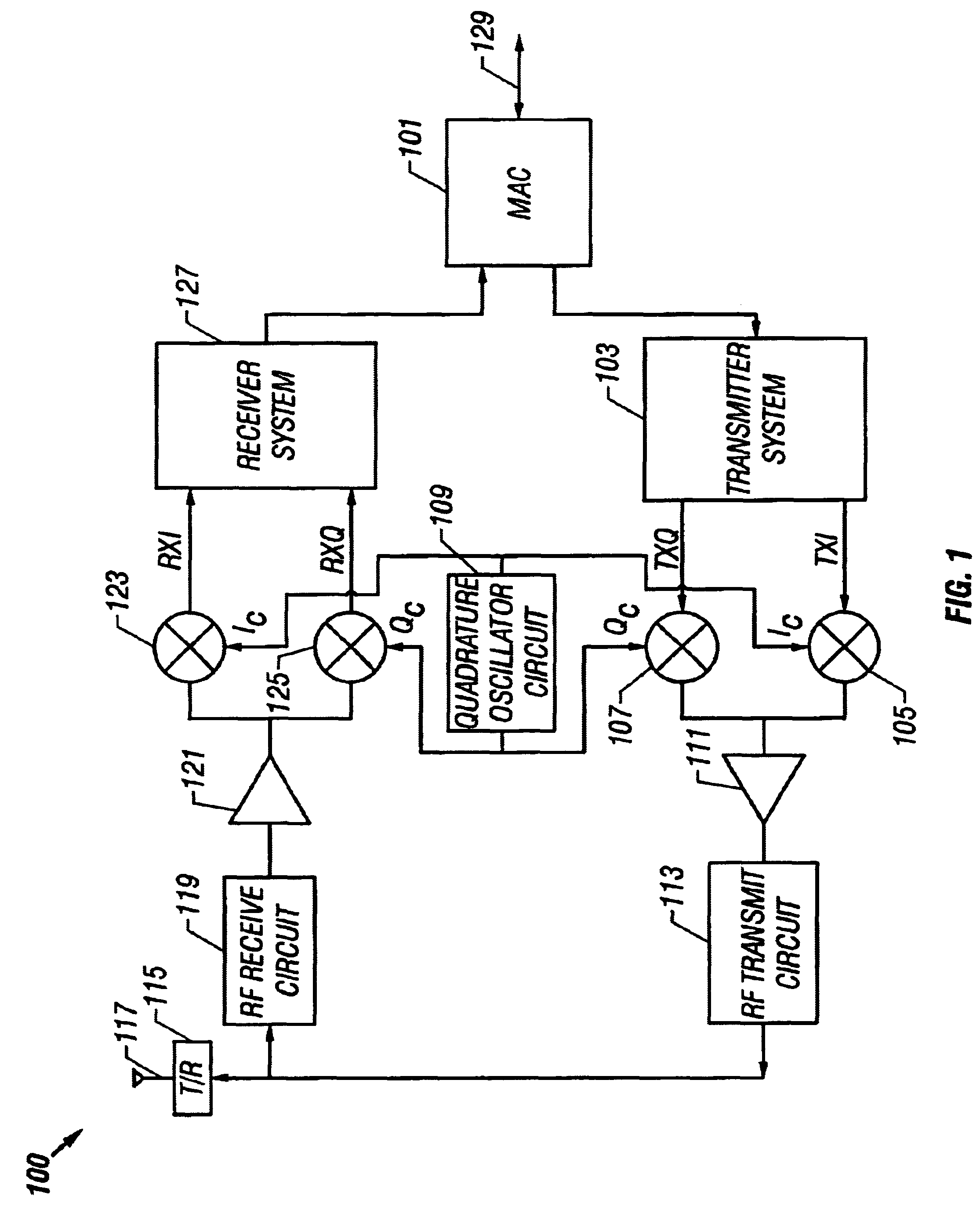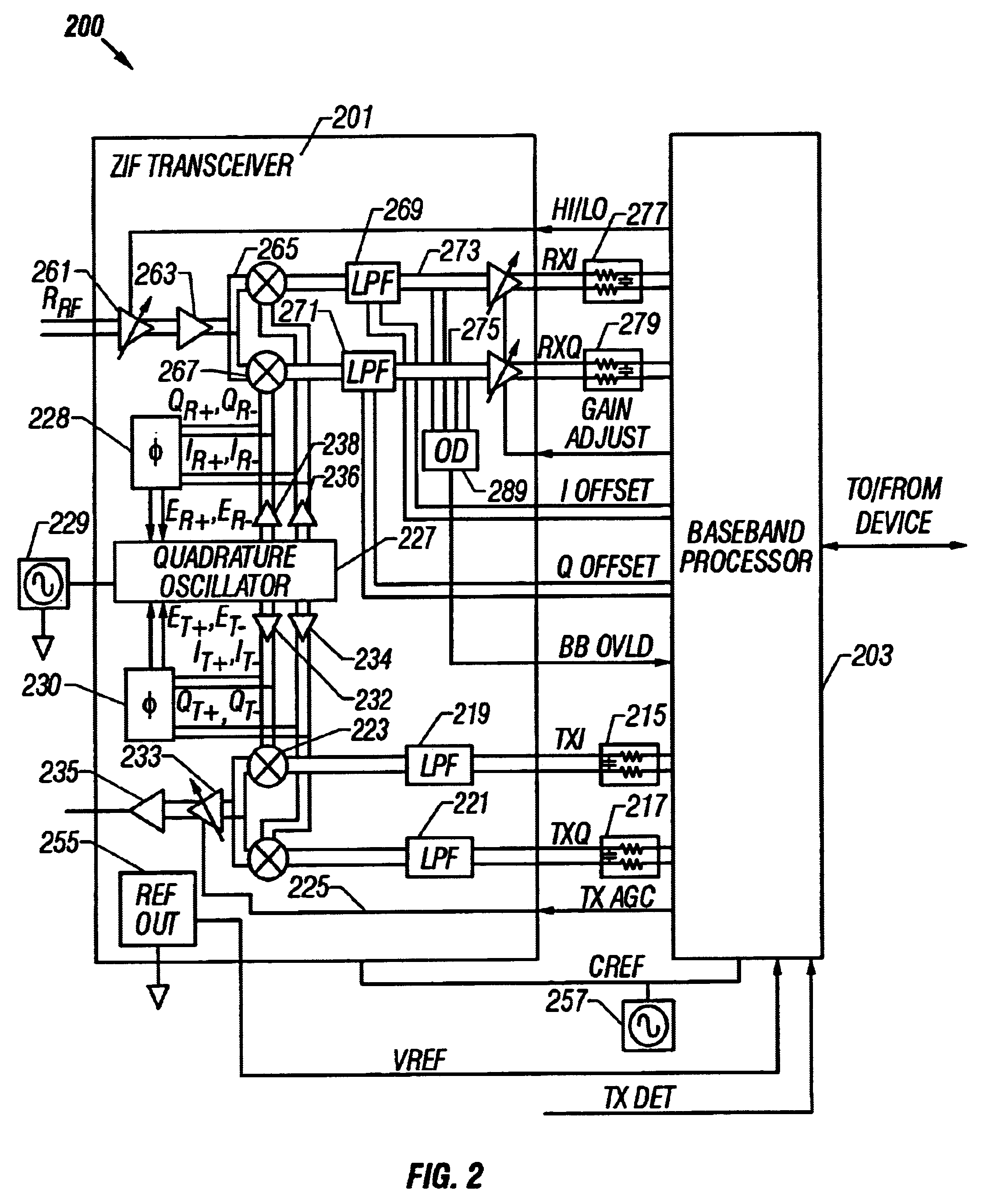System and method for detecting and correcting phase error between differential signals
a technology of differential signals and phase errors, applied in the field of system and method for detecting and correcting phase errors between differential signals, can solve the problems of many limitations, cable management and convenience, and typical environment of wireless communication, and achieve the effect of improving accuracy
- Summary
- Abstract
- Description
- Claims
- Application Information
AI Technical Summary
Benefits of technology
Problems solved by technology
Method used
Image
Examples
Embodiment Construction
FIG. 1 is a simplified block diagram of an exemplary wireless transceiver 100 that includes one or more phase error detectors 300 (FIG. 3) implemented according to an embodiment of the present invention. The wireless transceiver 100 may utilize any desired carrier frequency and modulation technique to achieve any of the several corresponding data throughputs. For example, the wireless transceiver 100 may be configured to operate according to the Institute of Electrical and Electronics Engineers (IEEE) 802.11 with a carrier frequency of approximately 2.4 gigahertz (GHz) and with data throughputs of 1, 2, 5.5 or 11 megabits per second (Mbps). Alternatively, the wireless transceiver 100 may be configured according to IEEE 802.11 with a carrier frequency of approximately 5 GHz for achieving data throughputs of 6, 12, 24, 36 or 54 megabits per second (Mbps). The direct sequence spread spectrum (DSSS) modulation technique may be used, although many communication and modulation techniques ...
PUM
 Login to View More
Login to View More Abstract
Description
Claims
Application Information
 Login to View More
Login to View More - R&D
- Intellectual Property
- Life Sciences
- Materials
- Tech Scout
- Unparalleled Data Quality
- Higher Quality Content
- 60% Fewer Hallucinations
Browse by: Latest US Patents, China's latest patents, Technical Efficacy Thesaurus, Application Domain, Technology Topic, Popular Technical Reports.
© 2025 PatSnap. All rights reserved.Legal|Privacy policy|Modern Slavery Act Transparency Statement|Sitemap|About US| Contact US: help@patsnap.com



